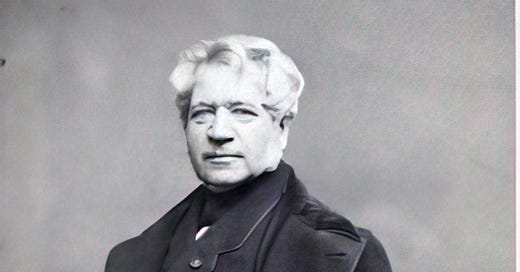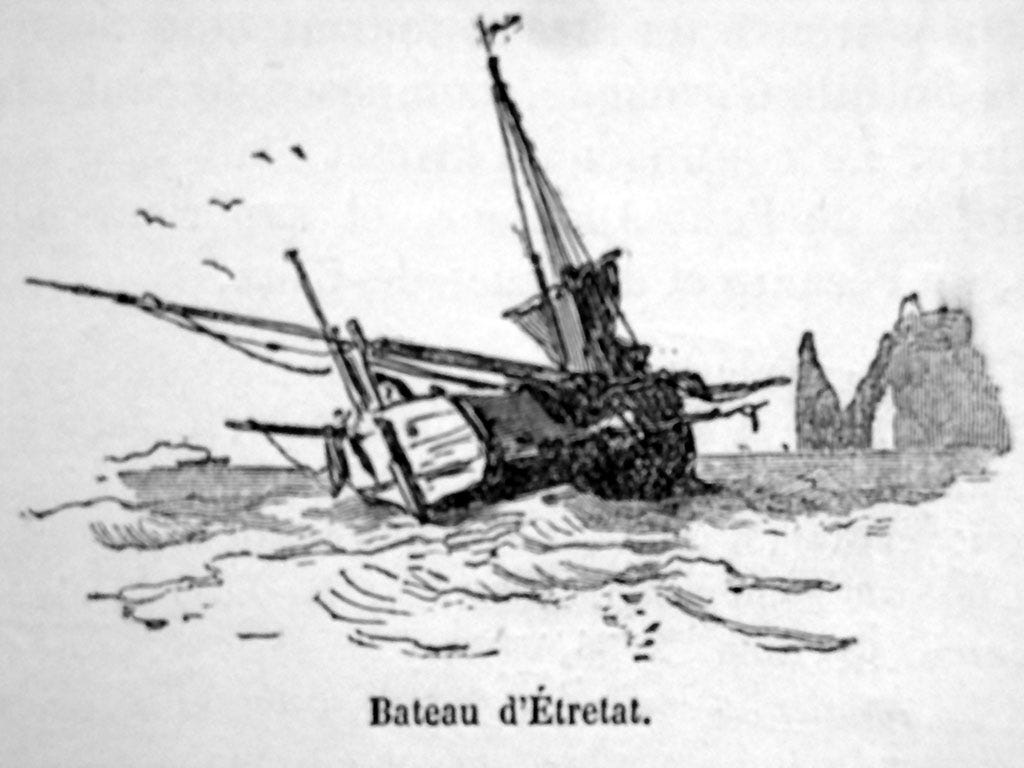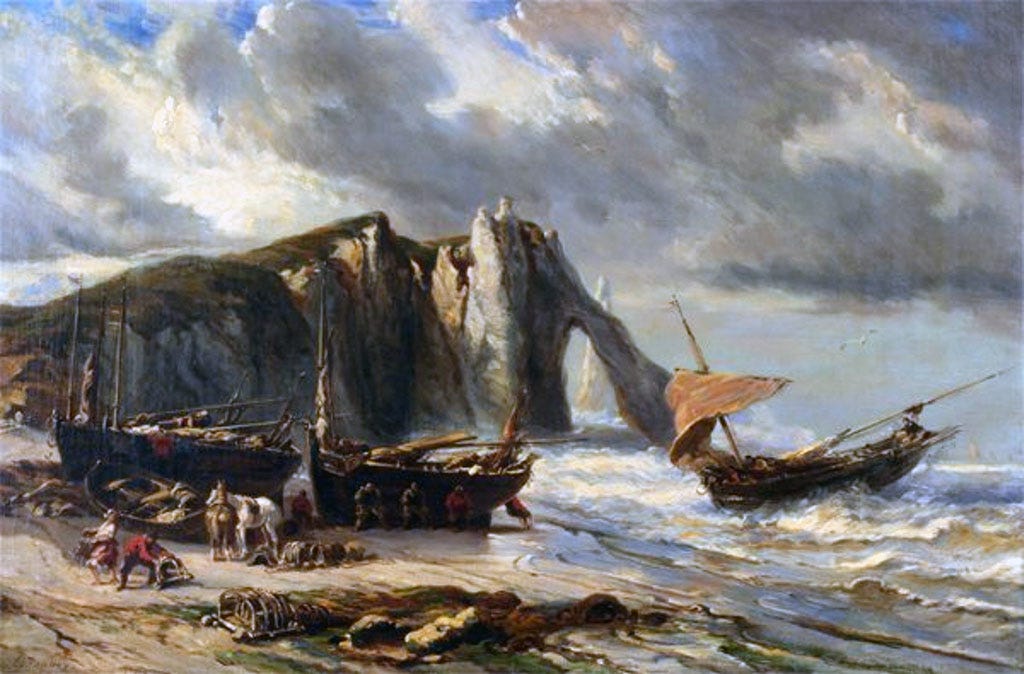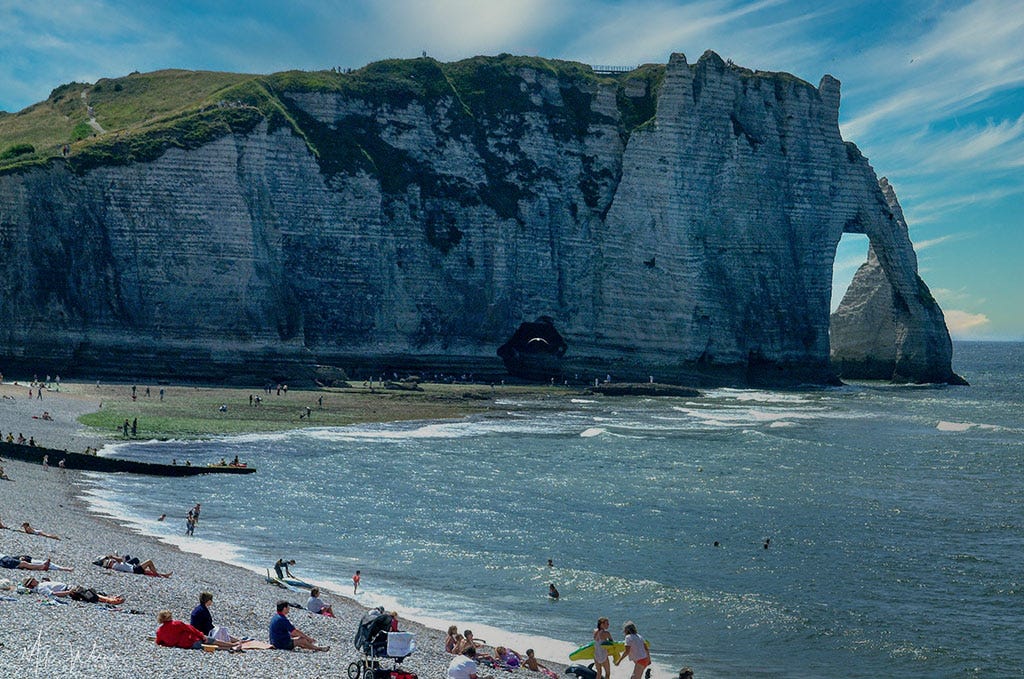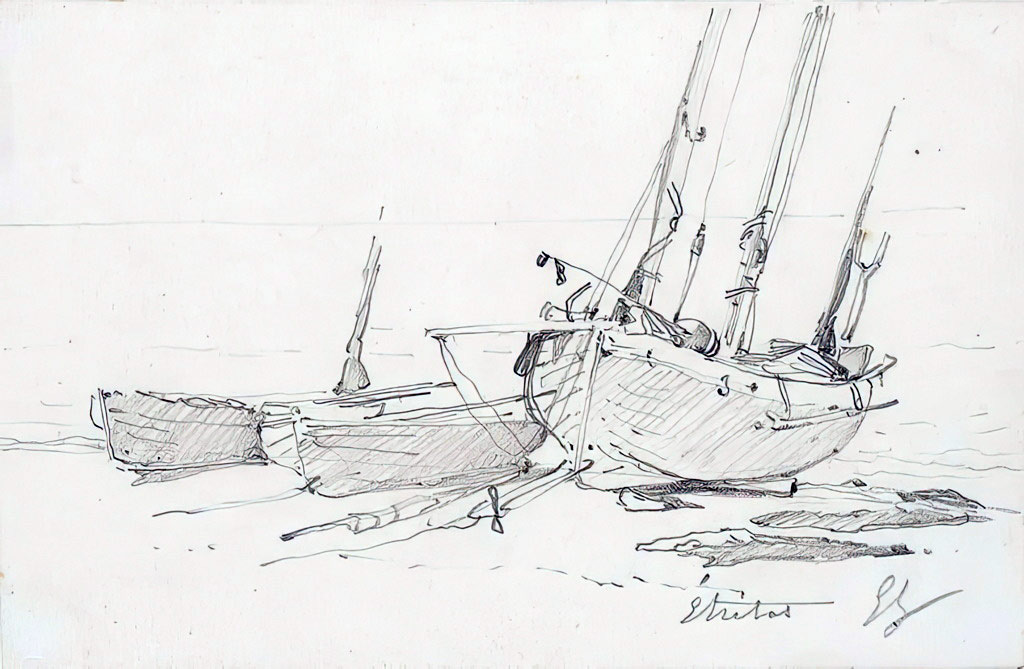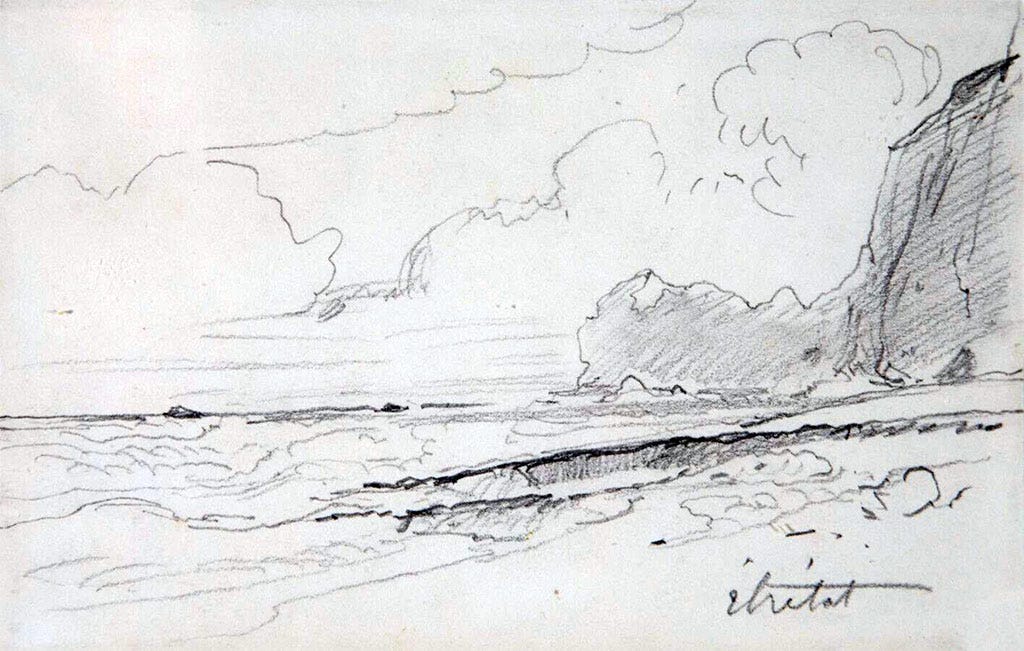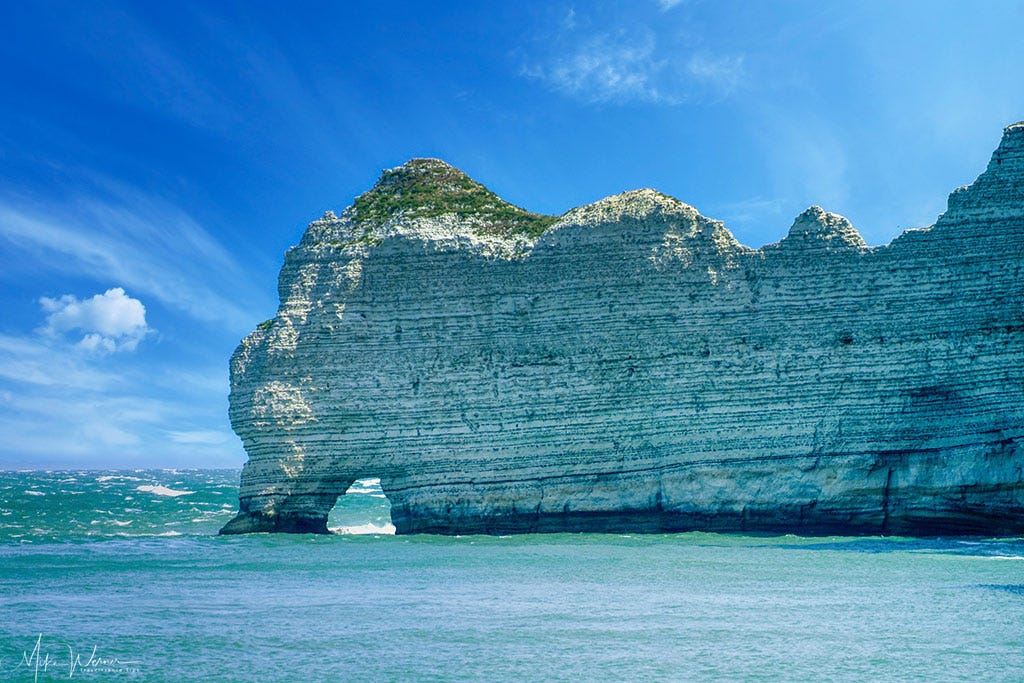Eugene Louis Gabriel Isabey (1803-1886) was a French painter and lithographer who is best known for his marine and landscape paintings, as well as his illustrations for books and magazines. He was born in Paris and studied under his father, the painter Jean-Baptiste Isabey.
Isabey's early work was heavily influenced by the Romantic movement, and he often depicted stormy seascapes and shipwrecks. He also painted portraits and historical scenes, including several paintings of Napoleon Bonaparte.
In addition to his paintings, Isabey was also an accomplished lithographer, and he created illustrations for a number of books and magazines, including the popular travel magazine Le Tour du Monde.
Isabey was highly regarded by his contemporaries and received numerous awards and honors during his lifetime, including the Legion of Honor. His work can be seen in museums throughout France, including the Louvre and the Musée d'Orsay.
Click here to read Isabey's full bio on Wikipedia.
In the drawing on the right you see one of three sea arches, the Porte d’Aval. It is the most visible of the three.
A Cabestan is a vertical-axled rotating machine developed for use on sailing ships to multiply the pulling force of seamen when hauling ropes, cables, and hawsers.
A caloge is a former fishing boat, covered with a roof, used to keep fishing materials dry.
The Porte d'Aval is the most visible of three sea arches at Etretat. It lies to the left of the Etretat beach. This is what it looks like today:
Etretat does not have an harbor but has fishing boats. They are dragged onto the beach when not in use.
The Porte d'Amont is a sea arch that lies to the right of the beach of Etretat. This is what it looks like today:
This is again the Porte d’Aval sea arch.

